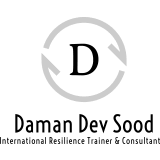This informal CPD article ‘Resiliency Testing (Part-II)’, was provided by Daman Dev Sood, an International Resilience Trainer & Consultant.
Introduction
Businesses today are facing an ever-increasing number of challenges, from technological disruptions to economic uncertainties. In order to survive and thrive in this dynamic environment, companies need to be resilient and reliable (people, processes, technology, systems etc.) that can withstand unexpected events and adapt to changing conditions.
In Part I, I covered the following:
- Components of Resiliency
- Resiliency Testing
- Importance and benefits
- Good practices
- Actors (participants)
- Sample scenarios
- Training and development investment
Here is more about Resiliency Testing.
Communication in Resiliency Testing
Communication is very important in Resiliency Testing, like any other management system or a part of it. The following cycle is very useful and takes care of communication related requirements specified in ISO 22301:2019 (clause7):
WHO-WHAT-WHOM-WHEN-HOW
WHO = the author
WHAT = the content
WHOM = the audience/ target/ interested party
WHEN = time/ frequency
HOW = medium
Identifying Interested Parties
An individual or an organisation that can affect your business or can be affected by your business or perceives to be affected by your business, is an Interested Party for you. So, this is simply a replacement for the old phrase ‘stakeholder’ but with a lot of meaning. Identification of your interested parties (for whatever you do or even for part of what you do) is important, but difficult task, not understood easily by the most.
The need is not just to identify them, but also to identify their needs and expectations from you. After that, just identification is not enough, you must be fulfilling those needs and expectations.
Actually, the cycle (Interested Parties Management) is like this:
1. Identify relevant interested parties
2. Seek/ identify/ establish their needs & expectations
3. Develop plans to fulfil those needs & expectations
4. Act according to those plans (investment of time, money, effort will be needed)
5. Check effectiveness of these plans and actions (how well are you doing)
6. Go back to interested parties with results and seek their satisfaction level
The same cycle should be adopted in Resiliency Testing also. In particular for Communication in Resiliency Testing.
Communication points in a Resiliency Testing Program
Here are some communication that you will need to do in Resiliency Testing:
- About the start of Resiliency Testing Program
- Benefits of Resiliency Testing
- Selection of an actor/ interested party
- Roles, responsibilities, and authorities of various actors/ interested parties
- Information about upcoming Resiliency Test
- Start, stop, and intermediate communication for a Resiliency Test
- Resiliency Testing Report/ Results
- Thanksgiving for participation in a Resiliency Test
- Improvements based on Resiliency Testing
- Needle movement on maturity of the Resiliency Testing Program















